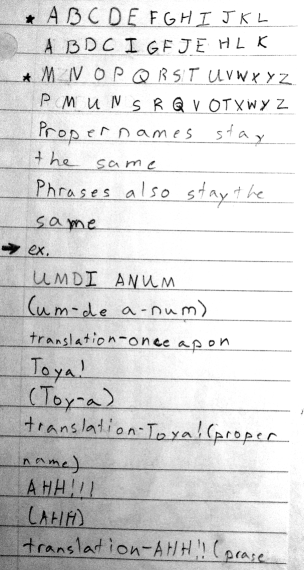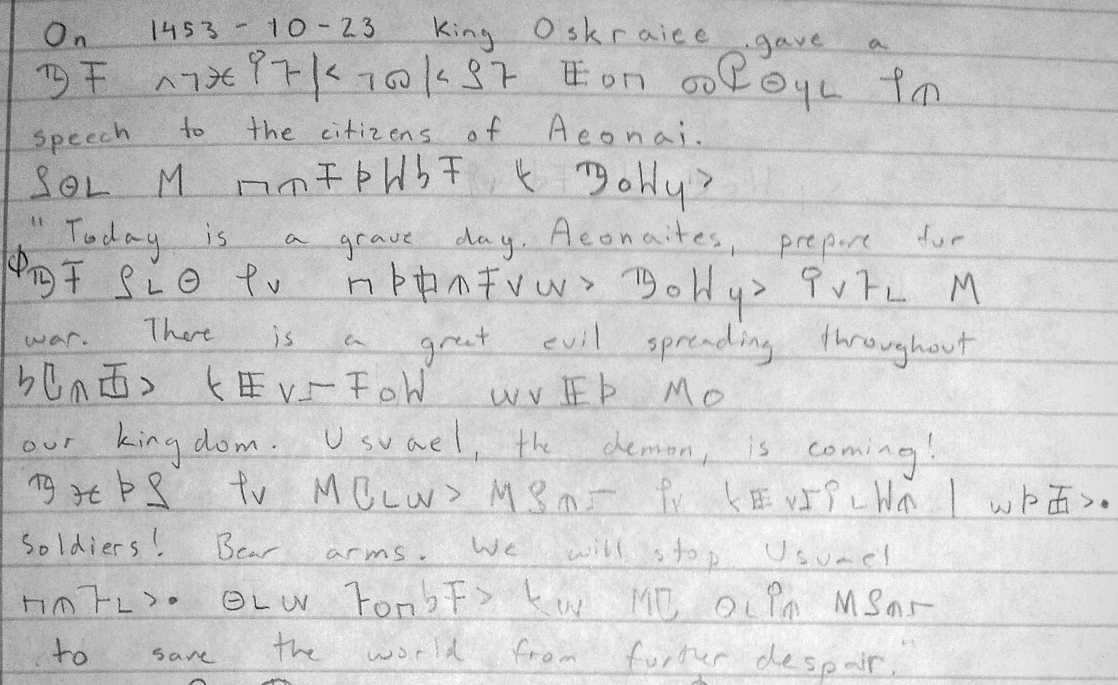Why I took Korean
I don't really consume any Korean music, shows, mangas, or have many Korean friends, but at University I took Korean to fulfill my language requirement. I had already studied Spanish for a few years in High School, and though I am still admittedly bad at Spanish, I could probably get by with a decent grade by taking Spanish again without too much work. So, why Korean?
The reason I took Korean stems from a short period of time in my life when I was pretty much enthralled with the process of making codes. First, I did simple things like substituting English letters with different symbols, making something that I decided to call "Dot Code", which obviously isn't a reference to anything.

It was a pretty easy code to break, as I quickly learned after showing it to some of my friends who enjoyed the task of trying to break it. It was fun to make the codes, especially because it was hard to come up with new symbols, so I created a couple of others as well. It also made me feel cool, like I was part of this exclusive club that could communicate through a medium that others didn't understand.
And although I made other codes, Dot Code was by far my favorite. I decided to work on it more, making rules for the code that I thought would differentiate it more from English. For example, you would write from top to bottom and left to right and replace repeated letters by using a different character. Soon, I became interested in speaking codes rather than just writing them down, so I made "Qidriv":

I replaced letters with other letters, which was kind of like a Caesar Cipher, except with the intent to speak instead of write. I changed vowel characters only with other vowel characters and left a few letters alone in an attempt to make the code speakable. I quickly found out, however, that the language didn't really translate into speech very well and I couldn't figure out any other way to make it work. I did think it sounded pretty cool though.
I felt that in order to make something that could be spoken easily, one would need an actual language. So, a few years later, I decided to try my hand at constructing a new language called "Adon". It had it's own alphabet composed of 24 letters and a few special grammar rules mostly involving adding prefixes to nouns and some rearranging of word order in sentences. Other than that, its grammar structure was more or less the same to English.

But I didn't really enjoy Adon that much and after a brief experiment with another made up language that definitely had way too many vowel sounds, I mostly stopped. That is, until I found this series of images.
Like the series of images posits, I did indeed assume that Korean was another language that was chock-full of symbols that represented words and required a lot of memorization. Instead, I found the alphabet's structure to be very interesting and I immediately wanted to know more. After a little research on the language's grammar, I decided that I wanted to take a class in Korean.
After taking the class for a couple of months, well into my second semester, I decided to try my hand again at making a new language. This time, I also decided to incorporate things that I had learned from Esperanto and Korean. The process went much smoother than before, and before I knew it, I had the basics of the language down.
After being unhappy from trying to make more complicated codes and languages, the Korean language was a source of inspiration for me. I bet that if I studied other languages I would also get more inspiration as well, but for now this is good enough.